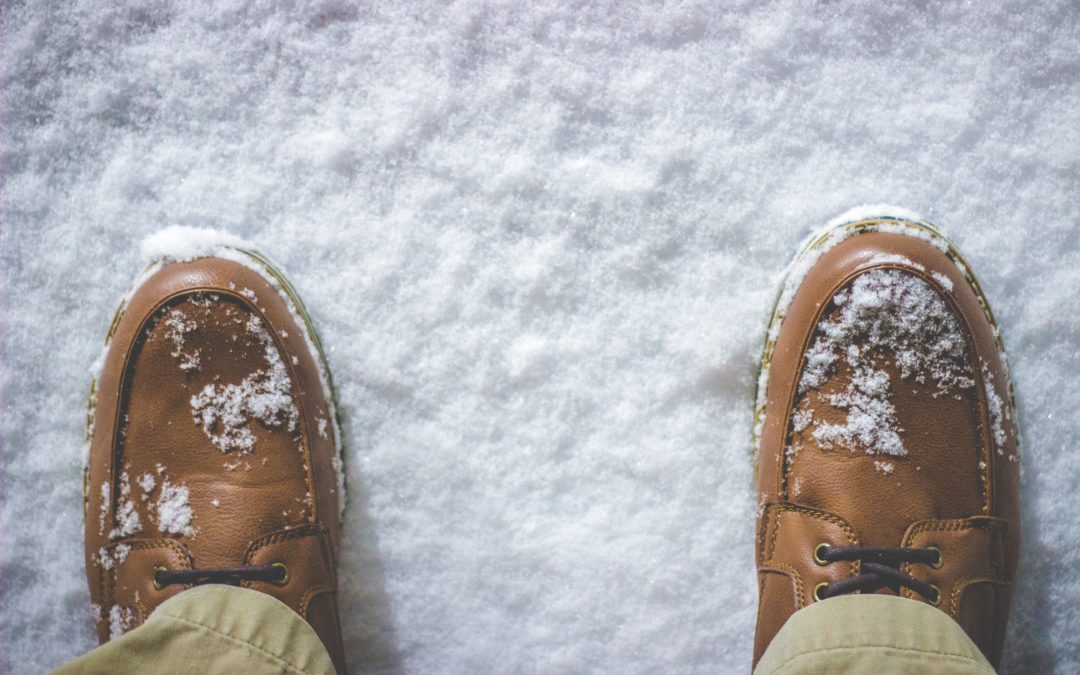By: Bill Hull, Director of Marketing, Atherton
Healthy habits that improve the quality of life for older adults are not just about diet, exercise, and sleep. We engage in literally dozens of routines each day that make an impact, for good or ill, on our health and longevity. We incorporate these everyday habits from our upbringing, our culture, our preferences, our peers, our values, and our life experience; so making changes can be tough. Consider these everyday shoe habits:
-
Always wear your shoes indoors
Yes, in some cultures, wearing shoes inside the house is heavily frowned upon. But there are very compelling reasons why older adults should always wear safe, sturdy shoes around the house: The most important reason is to avoid falls. According to the Centers for Disease Control and Prevention, more than one third of adults 65 and older fall each year in the United States. Thirty percent of these individuals suffer moderate to severe injuries, including hip fractures and traumatic brain injuries. Experts say that many falls are due to preventable factors such as muscle weakness, improper footwear, and medications.Leavingyour shoes at the door, and functioning in socks or bare feet might be your habit; but it’s a risky proposition. Boston’s Institute for Aging Research reported on a two-year study of 765 people, ages 64 to 97: The study found that nearly 52 percent of the participants who reported a fall were either barefoot, wearing socks without shoes, or wearing slippers at the time of their fall. These people also reported more serious injuries, including fractures, sprains, dislocations, and pulled or torn muscles, ligaments or tendons, as a result of their fall. The study concludes that “older people should wear shoes at home whenever possible to minimize their risk of falling.”
There are other reasons that make keeping your shoes on a good idea. Science tells us that when your feet get chilled, your body is less able to fight off disease and illnesses. Shoes also act as a protective barrier from communicable foot diseases such as bacterial and fungal infections. People with foot problems may need arch supports or cushioning for plantar fasciitis. Without this support, walking around the house can be very painful. Stubbing toes and stepping on things can also hurt. Callouses can become dry and split painfully if they are bare. Shoes keep the foot a bit more humid. Finally, it is critically important that people who have diabetes MUST protect their feet. Something as small as a badly stubbed toe or scrape can lead to complications that require amputation.
As we age, our feet, ankles, and knees need more support. The best way to provide what our body needs is by wearing safe, comfortable shoes all day, every day.
-
Always change your shoes from the outdoors
Asian cultures are right. Don’t wear your outdoor shoes when you come inside. To do so invites real problems: Researchers tell us the soles of the shoes you wear outside contain feces, vomit, dirt, grime and millions of bacteria that have a 90% chance of transferring to the floor of your house if you don’t remove your shoes before stepping inside. One study, from the University of Arizona found nearly 421,000 different bacteria present on the bottoms of 96% of shoes. These include the same bacteria which cause urinary tract infections, respiratory infections, and E coli which can cause serious digestive problems and kidney damage. One study reported 26.4 percent of the shoe soles among the samples tested positively for C. Diff. “Essentially, when you wear your shoes in a house, you are bringing in everything you stepped in during the day,” Jonathan Sexton, a laboratory manager at the University of Arizona told The Wall Street Journal. And potentially harmful bacteria can survive on your shoes for days or even weeks. Besides, keeping your outside shoes at the door will cut down on how often you have to clean.
-
Always choose indoor shoes for safety, health, and comfort
Wearing the wrong shoes indoors can be just as risky as wearing socks or no shoes at all. I’ve always relegated my oldest and worst pair of loafers to inside use once they became unpresentable to the public. But an article in the New York Times reports that “some footwear can increase the risk of slips, trips and falls by making people more prone to poor balance and bad gait, or by making it difficult to judge surface friction and distance from the floor.” You shouldn’t wear shoes or slippers that are loose, worn or backless. Slip-on shoes, such as sling backs or flip flops can slip and trip you; they are one of the most common causes of falls in older people. Also avoid shoes with slippery or worn soles, with a heel higher than one inch, or with a narrow heel, as these can cause your ankle to turn.
Comfort and style are important for every kind of footwear but be sure to look for these safety features in a house shoe or slipper: Buy a well-fitting, lightweight shoe with arch support or the capacity to insert additional support. The sole is one of the most important considerations in the safety of a house shoe. Extremely soft soles will not provide any support to the foot and could slip. Soles that are too hard will not give when you walk and may cause you to stumble from the lack of flexibility. Flat shoes that have wide and thin soles can give you the best sense of your proximity to the floor and provide the best stability. Look for a low heel, a high back or collar to support the ankle, and a strong Velcro® fastener on the front to ensure they won’t slip off.
Healthy habits begin with small steps toward sensible living. Take those steps in the right shoes. Choose shoe habits that promote safety, prevention, and common sense.


Recent Comments